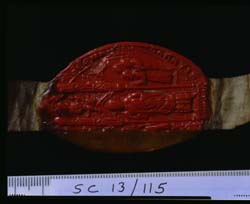 |
 |
 |
 |
 |
 |
 |
|
Byland Abbey: History
Byland Abbey: Buildings
|
Sources Human memory becomes so clouded and faded that
whatever The early history of Byland is recounted by Philip, the third abbot of the house, as he had heard it from his predecessor, Roger, and other senior monks of the community. The history also incorporates a number of documents from the abbey’s archives.(4) Philip was writing some sixty years after the original group had settled in Calder, and this is the earliest known foundation history.(5) Abbot Philip was probably also the author of the anonymous foundation history of Jervaulx, which was certainly written at Byland.(6) The foundation history of Byland was primarily intended for the instruction of future generations of monks, that they should understand how their predecessors had ‘sustained tribulations and oppressions, want and labour for the hope of eternal glory.’ (7) Philip was also concerned to explain Byland’s independence from Furness and Calder II, and its direct subjugation to Savigny.(8) Indeed, the climax of the history is Aelred of Rievaulx’s pronouncement on Byland’s status, c. 1155.(9) Philip’s account of the monks’ initial struggles highlights the potential problems facing new communities at this time, particularly, the difficulties of finding a suitable site with adequate resources, and of hardships caused by severe weather conditions, war and neighbours. The history was originally preserved in the chartulary of the house, but now survives only in a seventeenth-century Oxford manuscript.(10) The other major documentary source for Byland’s
history is the chartulary of the abbey, which dates from the fifteenth
century and is now preserved in
the British Library (BL MS Egerton 2823).(11) Various
other surviving sources include charters, wills and episcopal records,
the surrender deed of the
abbey, books
from the library and an array of interesting artefacts, for example, an
altar stone, fish hooks and thirteenth-century mosaic floor tiles.
|


